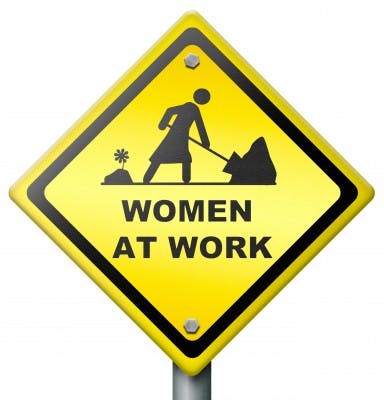When undecided voter Katherine Fenton took the mike during the second 2012 presidential debate, she had no idea that the answer to her question would spark an Internet sensation.
The question she asked was this: “In what new ways do you intend to rectify the inequalities in the workplace, specifically regarding females making only 72 percent of what their male counterparts earn?”
President Obama answered first, mentioning the Lilly Ledbetter Fair Pay Act, an amendment to the Civil Rights Act of 1964 and the first piece of legislation he signed into law upon taking office. Mitt Romney also spoke from his experience, describing his efforts as governor of Massachusetts to create a balanced cabinet, one in which women were equally represented.
Underrepresented and underpaid
When the candidates he evaluated didn’t meet his recruiting goals, Romney got proactive. “We took a concerted effort to go out and find women who had backgrounds that could be qualified to become members of our cabinet. I went to a number of women’s groups and said: ‘Can you help us find folks,’ and they brought us whole binders full of women.”
Whether you agree or disagree with Romney’s recruiting practices or his views on women’s issues, you have to admit that “binders full of women” was a little weird. And while the phrase that launched a thousand memes, a few hilarious websites, and an impressive amount of handcrafted costumes provided a welcome distraction from the flame wars lighting up most of our Facebook news feeds, few people are discussing the underlying issue — which is that women in the workforce are underrepresented and underpaid.
Yes, many recruiting experts and HR programs could be doing more to rectify the situation.
Recruiting women: where do you start?
If your goal is to recruit more women for your workforce, where do you start?
First, it’s important to realize that having a desire to recruit and actually recruiting are two entirely different things, and that even if a company’s HR program, recruiting group, and hiring team all agree that their company should hire more women, certain legal issues come into play.
Companies cannot, obviously, reserve spots for women or deny jobs to men. No matter how much they’d like to balance the scales during the employee selection process, companies can’t reject an overqualified man in order to hire an underqualified woman
The good news is that they don’t have to. No company has to resort to these tactics, and no company should hide behind them as an excuse for a staff comprised almost entirely of men.
Women make up 51 percent of the world’s population, and if they don’t make up a similar percentage of a company’s workforce, the problem isn’t the women themselves. The problem lies in the recruiting practices the company employs.
5 keys in recruiting more women
When you improve those practices, the number of working women at your company will naturally increase. Here’s how to do it:
- Create a united front. Your recruiting team, your interviewers and each member of your HR program should all be taught that recruiting, hiring, and retaining women is an extremely important goal for your company. Get to know your team members. Make sure that they each share this vision.
- Spread your recruiting net. To find many qualified female applicants, focus your recruiting efforts on places where women are easily reached. Research local women’s organizations and women’s employment websites. Look into job boards and career fairs at women’s colleges. These efforts won’t exclude men from applying or from being selected, but they will result in a higher number of female applicants.
- Create a female-friendly benefits program. What is your company’s maternity leave policy? Do your benefits cover family planning, prenatal care or gynecological exams? When a company offers benefits packages that more fully support women, it’s easier to find qualified applicants during the recruiting process. Female-friendly benefits also help keep valued employees where you want them – at your company.
- Take sexual harassment seriously. When you treat sexual harassment and gender discrimination with the seriousness these matters deserve, you create a positive environment for the working women in your company. A zero-tolerance policy will make retaining female employees easier, and when word gets out that your company isn’t afraid to stand up for its female workers, more women will respond to your job openings.
- Put women in positions of power. There’s a big difference between a board full of female executives and a Mad Men-esque typing pool. When women are represented in the highest levels of your company, other talented women will notice. Recruiting star female candidates then becomes much easier – but don’t be surprised if highly qualified women approach the company on their own, too. The mentoring that new hires can expect to receive from female execs is another huge draw.
Remember, talented and qualified women are everywhere out there, and if your company’s hiring practices don’t reflect that reality, it could be time to change the way you go about recruiting. Make your company a better place for women to work overall, and adjust your recruiting tools and practices to make your open positions more visible to women.
When you do, it will be easier to find the qualified female candidates you need. You may even need to ditch that binder and upgrade to a Trapper Keeper, just to be safe.
This article originally appeared on The Resumator Blog.
